If your cat is refusing to drink water from her bowl, or when you’re out on a walk, then she could become dehydrated and quickly unwell. In some instances, where a cat that regularly won’t drink water, the consequences can turn life-threatening.
I’ve researched and compiled the best results possible that explain why your cat won’t drink water, whether that’s from a bowl, when your away from the home, or when inside.
Why won’t my cat drink water?
Drinking water is an instinct and natural behavior for cats. Therefore, a cat that refuses to drink water is often a sign of an underlying problem or issue.
First and foremost, you must visit the vet if you are unable to get them to drink over 24 hours, or if you suspect there is something amiss with their health.
In the meantime, here are the most likely reasons why your cat won’t drink water at the moment.
1. Cat won’t drink water due to a mouth injury or dental issue
For most cats, a mouth injury will cause them to refuse and not drink water. Cats love picking up and chewing on sticks, chew toys, and other rough items, as all cat owners are aware.
Unfortunately, these objects will sometimes break or splinter causing injuries in or around the mouth area resulting in severe pain for the affected feline.

In most cases, cats will also refuse food and a speedy visit to the vet is necessary for them to return to their normal drinking and eating habits
Similarly, in older cats, chewing over numerous years can cause dental issues that are equally as painful meaning they hurt when trying to drink water. Here’s how to recognize tooth ache in your cat, as they won’t be able to tell you.
When left for a long time, these issues can quickly turn serious, resulting in infected gums or broken teeth. If you suspect that your cat is having trouble drinking due to this, take them to the vet immediately.
It is not uncommon for cats to refuse to drink until they are severely dehydrated because of dental problems.
2. Cat won’t drink water due to a change in taste
Additionally, cats are smart creatures, and will often detect even the smallest change to their water source. At times, when your cat is refusing to drink water, it can signify that they are unnerved by your choice to swap out their usual source of water with a different one.
If your cat suddenly won’t drink water inside, but will outside, this could be reason. Now, you don’t want them to revert to drinking rainwater, as this can make them ill.
Often, this happens when you are forced to give them tap instead of bottled water, distilled water (bad idea), or when traveling elsewhere in the country and having limited options.
Thankfully, with some encouragement, most cats will eventually give in and drink when fatigued. If push comes to shove, you can try mixing in some of the old water with the new water to see whether this entices them to drink.
3. Cat won’t drink water due to a health issue
In some instances, diseases can also affect the amount that cats will drink. For example, kidney disease commonly causes nausea as it progresses, resulting in affected cats refusing to touch their food and water.
Similarly, diseases that cause inflammation in the intestines, like gastroenteritis and pancreatitis, can also cause symptoms of nausea in felines.
Often, these diseases will be accompanied by other signs, such as vomiting and diarrhea… and your cat won’t drink water from her bowl perhaps due to weakness or nausea.
Therefore, it is important to take your kitten to the vet if you notice this, as cats can become dangerously dehydrated when exhibiting these symptoms.
4. Cat won’t drink water due to anxiety
Nervous cats that are prone to anxiety, can refuse to drink when they feel uncomfortable or fearful. If you own a cat similar to this, try finding out what is making them feel uncomfortable and take the necessary steps to reduce their stress.
For example, it is common for cats to become nervous around other cats while eating or drinking. If you suspect this is the case, move the competing cats or provide additional water bowls around the house for your nervous kitten.
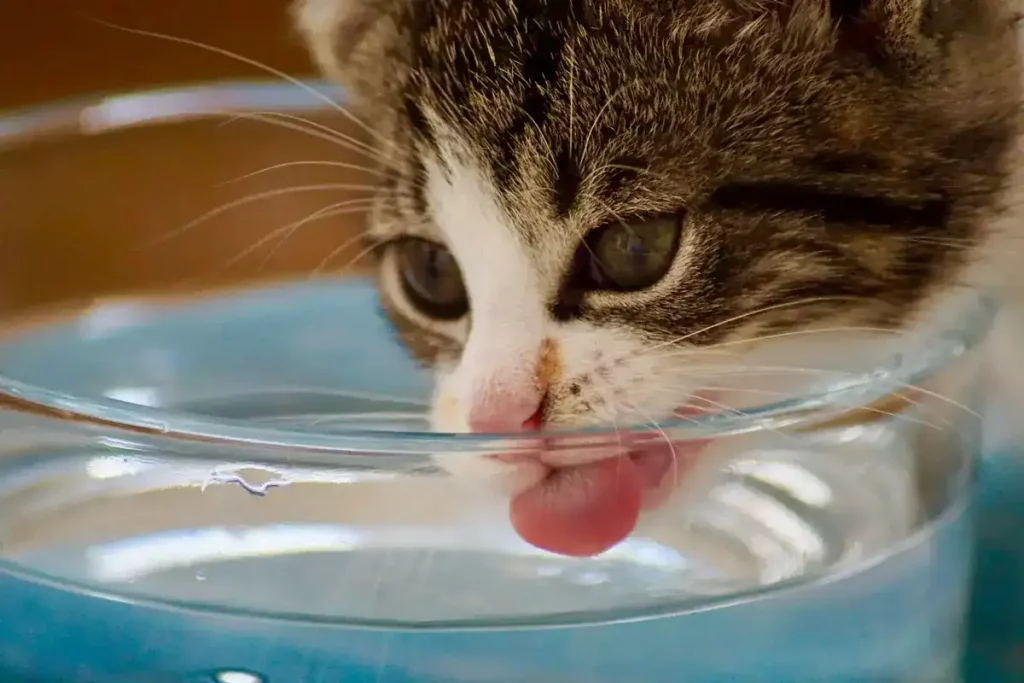
It is also a good idea to move the bowl to a quiet place away from any areas where there are loud or unfamiliar noises, as cats can develop negative associations with areas such as these in the home.
It’s not uncommon to have two cats in the home, one of which is more dominant. One of the pair can even urinate near or on water bowls for fear or dominance reasons. This will mean the other cat can stop drinking water from the bowl as a result.
5. Cat won’t drink from a water bowl in public for territorial reasons
And similarly, to the last point, do you have a cat that won’t drink from water bowls in public? Mine does this, and I’ve always put it down to her sensing that other cats have been drinking from it.
It makes sense, that if nervous, the cat might not want to drink from the outdoors water bowl if she thinks it belongs to another cat and doesn’t want confrontation.
Why a refusal to drink water can be risky
To make matters worse, this behavior is especially risky for younger cats or those with health issues. Therefore, dealing with a kitten who refuses to drink from its water bowl that’s topped up all day, be it a kitty or an older cat, is often a frustrating and worrying experience for cat owners.
However, gaining a proper understanding of why cats exhibit this behavior can help us to better deal with this problem.
Handy Hint: Read this guide to learn simple tricks to get your cat to drink more water.
In addition to this, by learning to recognize the symptoms of dehydration can allow us to address the situation before our cat becomes severely ill. Here’s what to look out for:
The symptoms of dehydration in cats
One of the most reliable ways you can do this is by testing the elasticity of your kitten’s skin. If you suspect your cat is dehydrated, gently pull on their skin and check to see if it returns to its original position quickly.
If the skin stays where it is or takes a long time to return to normal, then your feline friend is likely suffering from dehydration.
Another symptom of dehydration worth checking for is Xerostomia. This condition causes cat’s gums to become dry and sticky and their saliva to thicken, eventually resembling a paste.
Here’s why you should not let your cat’s mouth get dry according to the experts at PetMD.com.
“Drool – it’s one of the less desirable aspects of pet ownership, right? But in reality, saliva plays a number of vital roles. It moisturizes food, making it easier to swallow, is essential to oral comfort, and helps prevent dental disease and infection within the mouth. That’s why dry mouth (xerostomia) in pets can be so devastating.” (view source)
You can check for it by pressing your finger lightly against your cat’s gums and then remove it.
If hydrated properly, their gums will briefly turn white and then return to their normal pink hue within seconds. In dehydrated cats, this process takes much longer, sometimes up to a minute or more.
How important is water for cats?
Cats need to drink water regularly to stay healthy and fit. The reality is, that’s it’s the only drink cats need as I’ve researched previously.
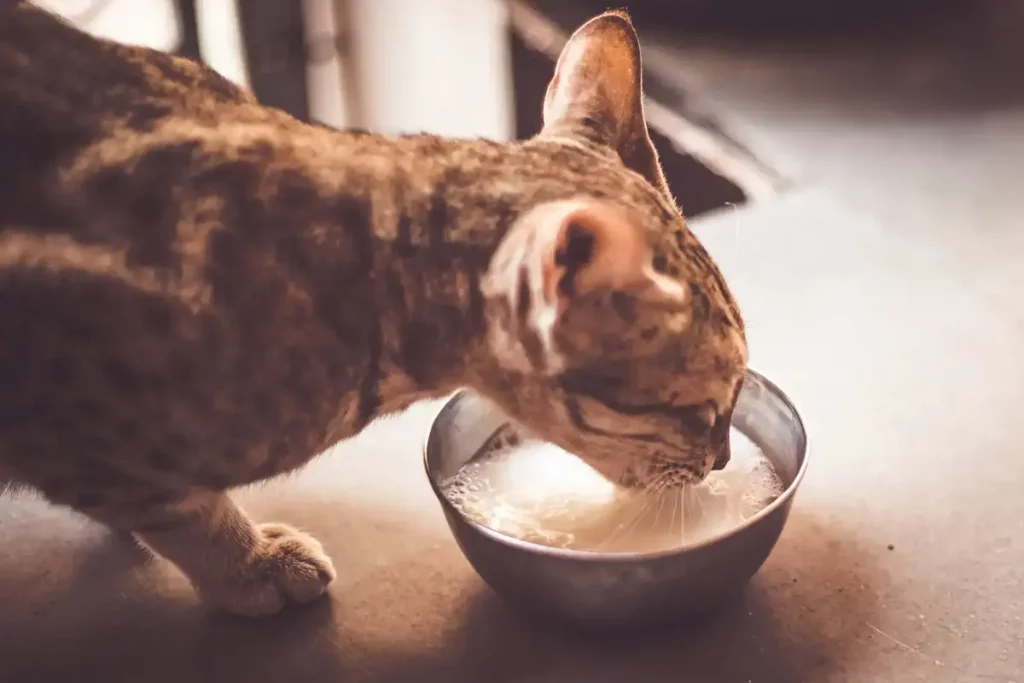
When compared to us, cats are at a greater risk of becoming dehydrated due to the way their bodies function. For example, unlike humans, cats cannot sweat effectively and instead release heat through vigorous panting.
Additionally, it is worth mentioning that cats do have sweat glands, contrary to popular belief. However, these glands are located in the paws and are essentially useless when it comes to lowering a cat’s temperature.
Therefore, your cat must drink regularly throughout the day, especially during warm bouts of weather.
How much water does a cat need to drink daily?
Before panicking when your cat refuses to drink and won’t take water from the bowl, you should understand the amount of water they need to remain healthy.
Firstly, it is important to note that nearly all cats forget to drink water from time to time. Although there are recommendations on how much water cats should drink a day, most felines regularly consume less water without experiencing any issues.
For example, this is normal behavior for older cats, who are usually less active than their younger counterparts.
Likewise, if your cat has been at home all day, or if she is poorly or nursing an injury, she will probably drink less water than a cat who has been out for rigorous exercise.
Therefore, there is no need to force them to drink if this is the case. Despite this, you should make sure that you are aware of how much they are drinking overall. Less active cats can still fall prey to dehydration, especially if they forget to drink or have trouble getting to their water bowl.
When it comes to the amount of water recommended for felines to drink, it can vary depending on the kitten’s size, diet, and level of exercise.
Thankfully, there is one rule to follow that enables you to determine this easier. In general, most cats need around an ounce of fluids per pound of their body weight daily to stay healthy, with kittens and extremely active felines needing a little more on average.
Visualizing this, it would mean that a 5-pound cat needs just over one cup of water per day… so if they are not drinking water at that volume, perhaps talk to your vet.
Conclusion
Similar to humans, cats need to drink plenty of water to stay healthy, and in most instances that is exactly what felines do. For most cats, drinking water is completely normal, and they will seek out a water source on their own, especially after a long or tiring walk.
However, it is not all that uncommon for cats to refuse to drink water, and this can, unfortunately, lead to dehydration.
If you are worried, please call a vet.
After all, if your cat won’t drink from the water bowl, and it becomes a regular occurrence, it’s a significant problem.
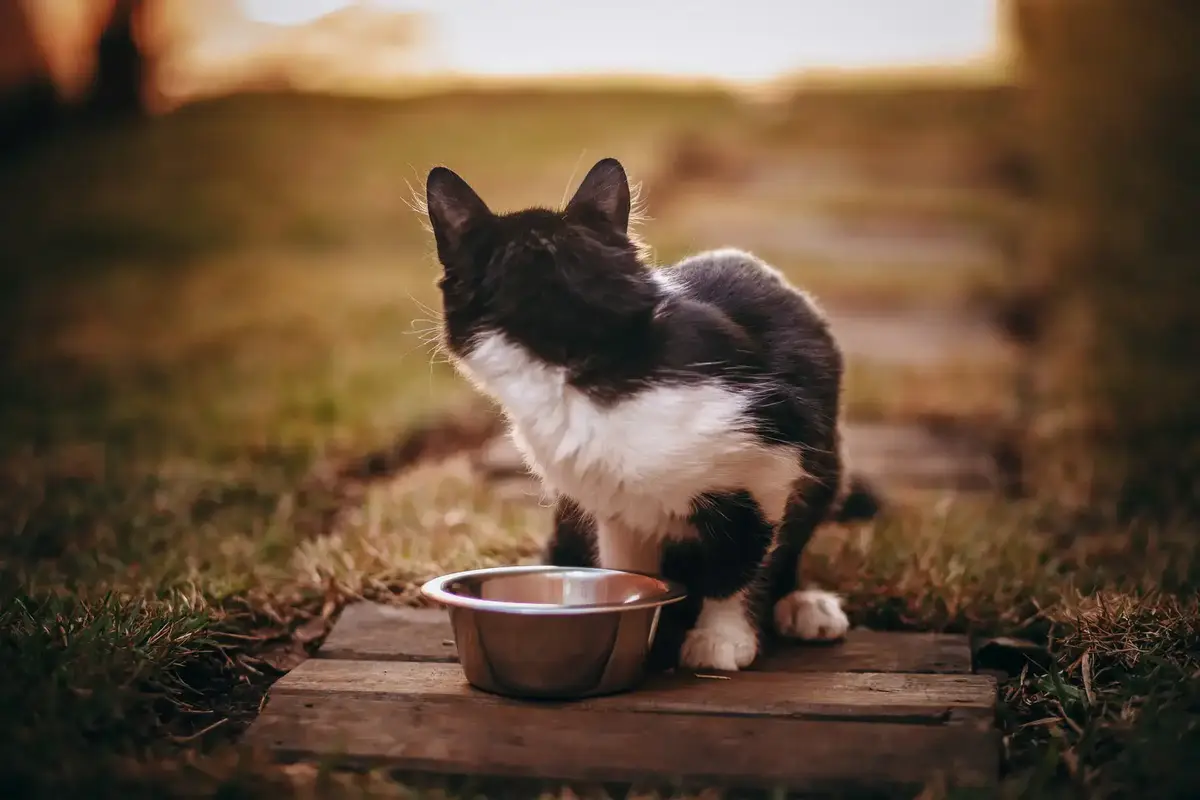
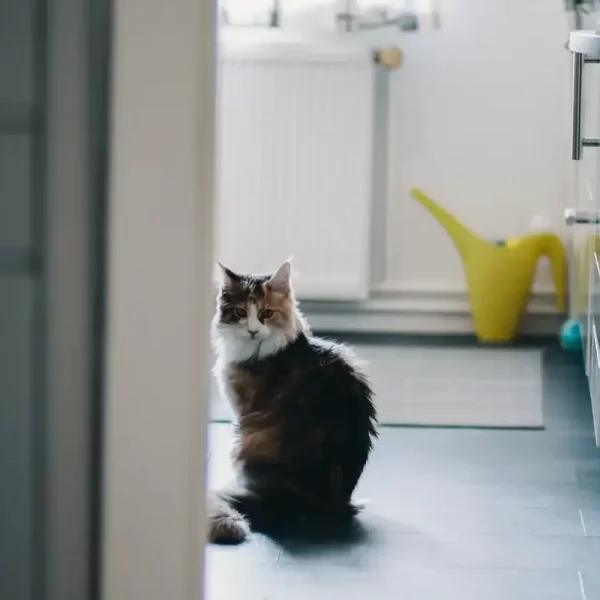
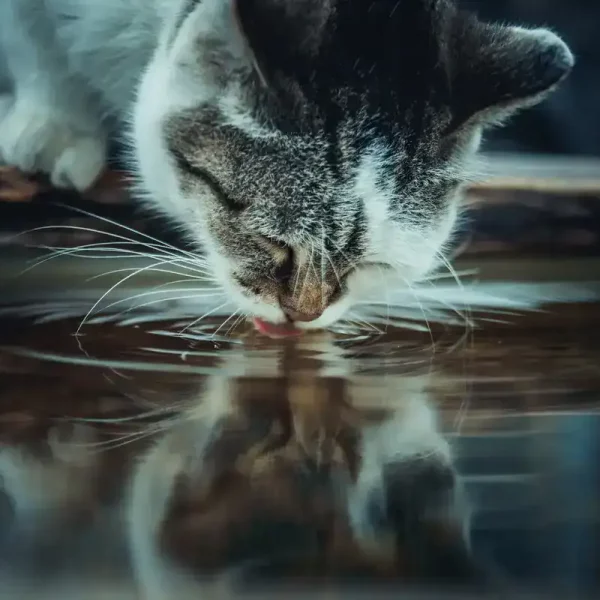
Leave a Comment